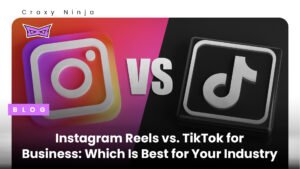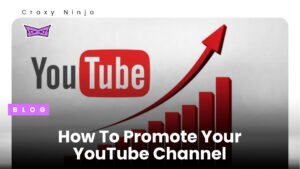Marketing is a critical aspect of any business and is essential for building brand awareness, attracting customers, and increasing sales. With the rise of digital technology, there are now a multitude of marketing channels and strategies available to businesses, making it difficult to determine the best approach. In this article, we will discuss the best marketing strategies for brands.
Best Marketing For Brands
Here are some marketing for brands:
Influencer Marketing
Influencer marketing involves partnering with individuals who have a large and engaged following on social media to promote a brand’s products or services. Influencer marketing has proven to be a highly effective tool, allowing brands to reach a large and targeted audience and increase engagement and sales.
Content Marketing
Content marketing is a strategy that involves creating and distributing valuable and relevant content to attract and retain a target audience. Content marketing can take many forms, including blog posts, videos, e-books, and social media posts, and is an effective way to build brand awareness, establish thought leadership, and drive traffic to a brand’s website.
Social Media Marketing
Social media marketing promotes a brand’s products or services on social media platforms such as Facebook, Instagram, and Twitter. Social media marketing allows brands to reach a large and targeted audience, increase engagement and brand awareness, and drive traffic to their website.
Search Engine Optimization (SEO)
Search engine optimization (SEO) is optimizing a website to rank higher in search engine results pages (SERPs) for targeted keywords. This is done by improving the website’s technical structure, content, and user experience, making it easier for search engines to understand its relevance and value. Effective SEO can help a brand reach a wider audience and drive more organic traffic to its website.
Email Marketing
Email marketing is the process of sending targeted and personalized messages to a list of subscribers. Email marketing is an effective way to build relationships with customers, drive sales, and increase engagement. Brands can use email marketing to promote their products or services, provide valuable content, and build customer loyalty.
Pay-Per-Click (PPC) Advertising
Pay-per-click (PPC) advertising is an online advertising model in which advertisers pay each time a user clicks on one of their ads. PPC advertising can effectively reach a targeted audience, increase brand awareness, and drive sales. Brands can use PPC advertising on platforms such as Google AdWords and Bing Ads to reach a wide range of potential customers.
Why is Influencer Marketing effective?
Here are some reasons why influencer marketing is effective:
- Reach
- Authenticity
- Engagement
- Targeting
Reach
Influencer marketing allows brands to reach a large and targeted audience through the influencer’s social media following. This reach can be especially valuable for small and medium-sized businesses that may need more money or resources to reach a large audience through traditional advertising.
Authenticity
Influencer marketing is considered more authentic than traditional advertising because the influencer’s followers trust the influencer’s opinions and recommendations. When an influencer promotes a brand or product, followers are more likely to trust their endorsement and be more receptive to the brand’s message.
Engagement
Influencer marketing often results in higher engagement rates compared to traditional advertising. This is because influencer content is often more relatable and appealing to the target audience, leading to higher levels of engagement, such as likes, comments, and shares.
Targeting
Influencer marketing allows brands to target specific demographics, such as age, gender, location, and interests, by choosing influencers whose followers match the desired target audience. This targeting can help brands reach the right audience with their message, resulting in higher engagement and conversions.
How to Choose the Right Influencer?
Here are some tips to choose the right influencer:
- Relevance
- Audience size
- Engagement rate
- Brand fit
Relevance
When choosing an influencer, it is important to ensure that their content and followers are relevant to the brand and its products or services. For example, an influencer who specializes in fashion and beauty may not be the best fit for a brand that sells technology products.
Audience size
While an influencer’s audience size is essential, it is not the only factor to consider. It is more important to choose an influencer with an engaged and loyal following rather than a large but passive one.
Engagement rate
The engagement rate measures how active and engaged an influencer’s followers are. This can be calculated by dividing the total number of likes, comments, and shares by the total number of followers. A high engagement rate indicates that the influencer’s followers are active and engaged with their content, which can result in higher engagement for the brand’s message.
Brand fit
When choosing an influencer, it is important to consider whether the influencer’s personal brand and values align with the brand’s. For example, an influencer who promotes a healthy lifestyle may not be the best fit for a brand that sells unhealthy snacks.
How to Measure the Success of an Influencer Marketing Campaign?
- Reach
- Engagement
- Sales
- Return on investment (ROI)
Reach
The reach of an influencer marketing campaign can be measured by the number of impressions (views) the campaign received. This metric can be useful for measuring the campaign’s overall exposure and reach.
Engagement
The engagement of an influencer marketing campaign can be measured by the number of likes, comments, shares, and other interactions the campaign received. This metric can provide valuable insight into the level of interest and engagement the campaign generated.
Sales
One of the most important metrics for measuring the success of an influencer marketing campaign is sales. Brands can track the number of sales that are generated from the influencer’s promotion of their products or services. This can help brands determine the influencer marketing campaign’s impact on their bottom line.
Return on Investment (ROI)
The return on investment (ROI) is a measure of the profitability of an investment. In the case of influencer marketing, the ROI can be calculated by dividing the total revenue generated by the campaign by the total cost of the campaign. A high ROI indicates that the influencer marketing campaign was successful and generated a good return for the brand.
Tips for a Successful Influencer Marketing Campaign
- Clear goals and objectives
- Authentic and creative content
- Clear and transparent communication
- Measure and analyze results
Clear goals and objectives
Before starting an influencer marketing campaign, it is important to have clear goals and objectives. This could include increasing brand awareness, driving sales, or improving engagement. Having clear goals and objectives will help the brand determine what metrics to track and measure to determine the campaign’s success.
Authentic and creative content
Influencer marketing is most effective when the content produced is authentic and creative. Brands should encourage influencers to use their style and voice to promote the brand rather than trying to impose a specific style or message.
Clear and transparent communication
Clear and transparent communication is essential for a successful influencer marketing campaign. Brands should clearly communicate their goals and expectations to the influencer and provide them with the necessary information and resources to promote their products or services effectively.
Measure and analyze results
Finally, it is important to measure and analyze the results of an influencer marketing campaign to determine its effectiveness and identify areas for improvement. Brands should track and measure key metrics, such as reach, engagement, sales, and ROI, to determine the campaign’s impact and make informed decisions about future campaigns.
Conclusion
In conclusion, there are many marketing strategies that brands can use to build brand awareness, attract customers, and increase sales. The best marketing strategy will depend on a brand’s goals, target audience, and resources. Brands should consider a combination of different marketing strategies to achieve the best results, including influencer marketing, content marketing, social media marketing, SEO, email marketing, and PPC advertising






